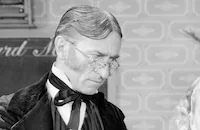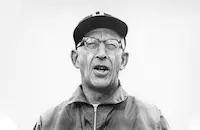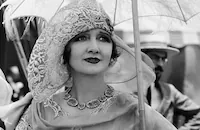Nothing Sacred (1937) is a key film in that short-lived genre known as 'the screwball comedy," a unique Hollywood creation that flourished between 1933 and 1940. Distinguished by its eccentric characters, irreverent humor, and breakneck pacing, these films usually featured privileged but irresponsible characters running amok against the backdrop of the Great Depression when society was in turmoil. But while the idle rich were mercilessly lampooned in the most popular screwball comedy of the previous year - My Man Godfrey (1936) - the whole human race gets dished in Nothing Sacred, from the newspaper industry to a public that enjoys reading sob stories about someone else's misfortune.
Ben Hecht, a former Chicago newspaper man working as a Hollywood screenwriter, was hired by producer David O. Selznick to come up with a comedy for Carole Lombard in the spring of 1937. After several false starts, Hecht finally heeded Selznick's suggestion to adapt the short story, "Letter to the Editor" by James H. Street, that had appeared in Hearst's International-Cosmopolitan. Hecht's screenplay was titled Nothing Sacred and included a part for his friend, John Barrymore. Unfortunately, Selznick incurred Hecht's anger when he refused to use Barrymore who, at this point in his career, had become an incurable alcoholic. The final straw for Hecht was when Selznick demanded a 'happy ending' for what was clearly intended to be a very black comedy and the writer walked off the production. The screenplay was then handed over to Dorothy Parker and Robert Carson to polish the dialogue and eventually Ring Lardner, Jr. and Budd Schulberg were brought in to provide an acceptable ending.
Despite the bad blood between Hecht and Selznick, the actual filming of Nothing Sacred was a high-spirited affair that often resembled a non-stop party. Practical jokes were the order of the day and, at one point, Lombard had director William Wellman bound in a straitjacket by some strong-armed crew members so she could have his undivided attention. Wellman, in turn, showed Lombard how to tackle a man in preparation for her free-for-all with Fredric March at the film's climax. Lombard's zany sense of fun even affected the usually humorless March who went careening around the Selznick lot with her in a rented fire engine during a production break. It was generally known in Hollywood circles that Lombard wasn't particularly fond of March ever since he tried to seduce her on the set of The Eagle and the Hawk (1933) but the two actors got along famously on this picture.
Carole Lombard often said Nothing Sacred was one of her favorite films and it's certainly an ideal showcase for this dazzling blonde comedienne who deservedly became the "Queen of Screwball Comedy" after her performances in this, Twentieth Century (1934), and My Man Godfrey (1936). Besides Lombard's performance, Wellman's expert direction, and the sharp dialogue, Nothing Sacred also deserves a footnote in film history as the first use in a color film of process effects, montage and rear screen projection. Backgrounds for the rear projection were filmed on the streets of New York and Paramount would later refine this method in their subsequent color features.
Nothing Sacred would later serve as the basis for the Broadway musical, Hazel Flagg, which premiered in 1953. Then Jerry Lewis and Dean Martin starred in a 1954 remake entitled Living It Up with Lewis in the Lombard role, Dean Martin as the doctor, and Janet Leigh as the reporter.
Producer: David O. Selznick
Director: William Wellman
Screenplay: Ben Hecht, Ring Lardner Jr., Budd Schulberg
Art Direction: Lyle Wheeler
Cinematography: Howard Greene
Costume Design: Travis Banton, Walter Plunkett
Film Editing: Hal Kern, James Newcom
Original Music: Oscar Levant
Principal Cast: Carole Lombard (Hazel Flagg), Fredic March (Wally Cook), Charles Winninger (Dr. Enoch Downer), Walter Connolly (Oliver Stone), Sig Rumann (Dr. Emile Egglehoffer).
C-74m.
by Jeff Stafford








































